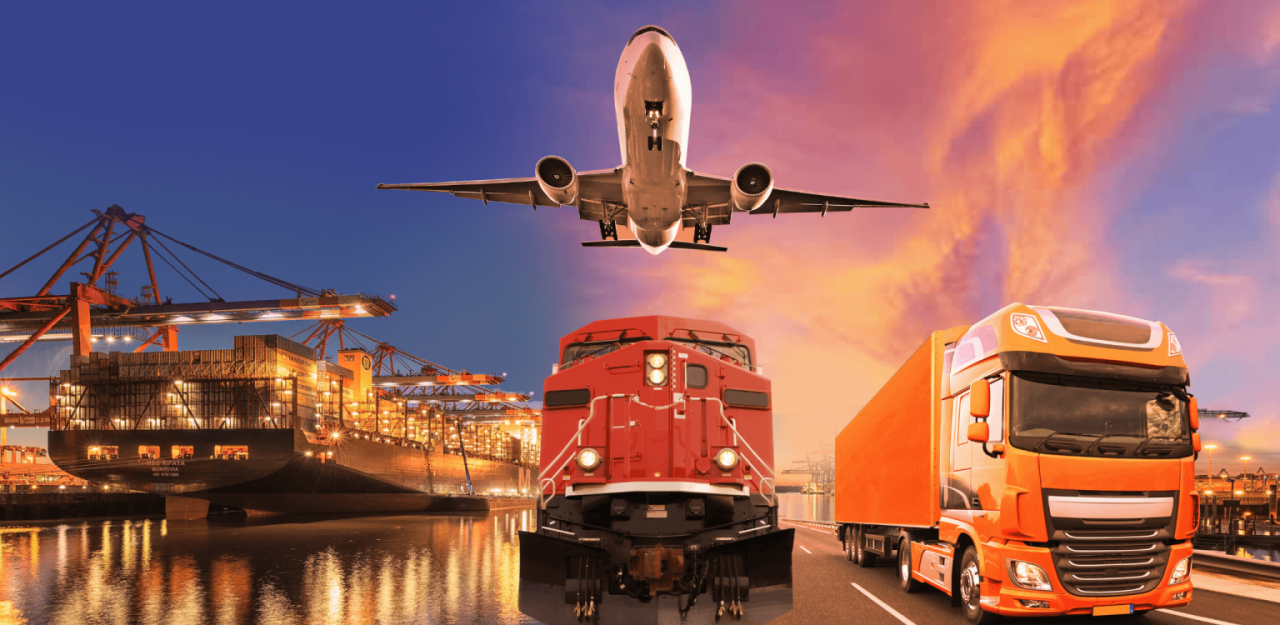Transporting fish safely requires careful planning and execution, ensuring their well-being throughout the journey. This comprehensive guide details the crucial steps, from selecting appropriate containers to handling fish during unloading. Understanding fish species’ needs and the nuances of various transportation methods is paramount to a successful and stress-free relocation.
This guide will cover everything from the diverse needs of various fish types to the specifics of choosing the right container, packing materials, and handling techniques. We will also address transportation methods, potential emergencies, and essential post-transport care to ensure a smooth transition for your aquatic companions.
Types of Fish and Their Needs

Proper fish transportation necessitates a thorough understanding of the specific needs of each species. This includes recognizing their environmental origins, size, and physiological tolerances. Careful consideration of these factors is paramount to ensuring their well-being during transit and minimizing stress.Understanding the diverse needs of different fish types is crucial for successful transportation. From the delicate requirements of tropical species to the robust nature of coldwater fish, each presents unique challenges.
Different oxygen demands, temperature tolerances, and water quality parameters must be meticulously addressed to maintain their health and survival.
Freshwater Fish Transportation
Freshwater fish, encompassing a vast array of species from small community fish to large cichlids, have varying needs in transport. A crucial factor is maintaining water quality, which directly impacts their physiological state during transit.
- Oxygen Requirements: Species with high activity levels, such as some species of cichlids, require higher dissolved oxygen levels. These fish often benefit from aeration during transport, either through bubbling or an air pump. Less active fish generally tolerate lower oxygen levels but still require adequate water movement.
- Temperature Considerations: Maintaining the proper temperature is essential for freshwater fish. Sudden temperature changes can induce stress and lead to illness. Transport containers should be insulated and temperature-controlled to minimize fluctuations.
- Water Quality Parameters: Monitoring parameters like pH, ammonia, nitrite, and nitrate is vital. Slight deviations from optimal levels can trigger stress responses in fish. Maintaining a stable water chemistry during transport is critical to their survival.
Saltwater Fish Transportation
Saltwater fish, with their unique osmotic needs, present specific transport challenges. Maintaining the salinity of the water is crucial.
- Salinity Maintenance: The specific salinity (measured in parts per thousand) must be maintained closely throughout the journey. Deviations can be detrimental to the fish’s health. Specialized saltwater transport containers or systems to maintain salinity are essential.
- Temperature Regulation: Temperature fluctuations can be particularly harmful to saltwater fish. Transport containers should be insulated to maintain the correct temperature, often close to that of their natural habitat.
- Oxygen Requirements: Oxygen levels are important for all fish, and saltwater species are no exception. Effective aeration is crucial, and some species benefit from the addition of specialized salts or additives to enhance the water’s oxygen-carrying capacity.
Tropical Fish Transportation
Tropical fish, often originating from warmer climates, have particular temperature requirements. Acclimation is a key factor for a successful transport.
- Temperature Control: Tropical fish thrive in a narrow temperature range. Transport containers should be insulated and equipped with temperature-control mechanisms to ensure the water temperature remains stable.
- Water Quality: Maintaining stable pH levels and ensuring minimal fluctuations in ammonia, nitrite, and nitrate concentrations are vital for tropical fish.
- Acclimation: Gradual acclimation to the transportation environment is crucial. Fish should be exposed to the transport water gradually to reduce stress. This usually involves a gradual increase in the transport water’s temperature, salinity, and other parameters.
Coldwater Fish Transportation
Coldwater fish, from temperate regions, demand a cold environment during transport.
- Temperature Maintenance: Coldwater fish must be transported at temperatures consistent with their natural environment. Appropriate insulation and cooling measures are vital to avoid overheating.
- Oxygen Supply: Even in cold water, proper oxygenation is crucial. Aeration is needed to ensure adequate oxygen levels for these fish.
- Water Quality: Maintaining optimal pH levels and minimizing fluctuations in ammonia, nitrite, and nitrate levels is essential during transport.
Choosing the Right Transport Container
Selecting the appropriate container is critical for ensuring the safe and healthy transport of fish. Proper containers minimize stress and injury, preventing health issues and maximizing survival rates during transit. Careful consideration of materials, dimensions, and accessories is paramount for a successful journey.Transport containers must provide a safe and stable environment for the fish. The choice of container material, size, and ventilation significantly impacts the fish’s well-being during transit.
A well-designed container will maintain suitable water parameters, ensuring optimal hydration and oxygen levels.
Container Material Comparison
Careful selection of the container material is vital. The material should provide sufficient protection, stability, and prevent damage to the fish. Different materials possess varying degrees of strength, insulation, and cost-effectiveness.
| Material | Pros | Cons |
|---|---|---|
| Plastic | Lightweight, affordable, readily available, durable, and relatively easy to clean. | Can sometimes trap odors, may not provide the same visual clarity as glass, and can be less resistant to impacts than glass or other materials. |
| Glass | Excellent visibility, allowing for observation of fish during transit, strong and resistant to damage. | Heavy, can be prone to breakage if not properly handled, and more expensive than plastic. |
| Fabric (e.g., mesh bags) | Lightweight, allows for some air circulation, affordable. | Less resistant to damage and potentially less protective than plastic or glass, not suitable for long-distance transport or when maintaining precise temperature is critical. |
Essential Features of an Ideal Transport Container
The ideal container should meet specific requirements for fish safety and well-being. Essential features include dimensions, ventilation, and insulation.
- Dimensions: The container’s size should be appropriate for the number and size of fish being transported. Adequate space is critical for minimizing stress and promoting natural behaviors. Overcrowding can lead to injuries, disease, and death.
- Ventilation: Adequate ventilation is crucial to maintain appropriate oxygen levels and prevent the build-up of harmful gases. Proper ventilation systems, like perforated lids or mesh panels, allow for continuous fresh water exchange.
- Insulation: For long-distance transports, especially in fluctuating temperatures, insulation is essential. It helps maintain a stable temperature environment, reducing stress on the fish and promoting their well-being.
Importance of Container Size
The container’s dimensions directly influence the fish’s well-being during transit. A container that is too small can cause stress, injury, and potentially lead to death. Conversely, a container that is too large may not maintain optimal water parameters. A well-designed container size ensures the fish are not stressed by crowding or the lack of space. A well-fitting container for the number and size of fish will minimize stress.
Role of Water Volume
Sufficient water volume is essential to maintain hydration and oxygen levels. Adequate water volume is vital for ensuring the fish remain hydrated during transit. Sufficient water volume will also help maintain oxygen levels, preventing the buildup of harmful gases. The volume of water should be appropriate to the size and number of fish being transported.
Accessories for Fish Transport
Several accessories are necessary to ensure a safe and successful fish transport. These accessories can enhance the safety and comfort of the fish.
- Air Pumps: Essential for maintaining dissolved oxygen in the water. Air pumps provide continuous oxygenation to prevent fish from suffocating.
- Water Heaters: Maintain optimal water temperature for specific fish species. Improper water temperature can cause stress, disease, and death.
- Thermometer: Monitors the water temperature during transit. Regular temperature checks ensure the water remains within the appropriate range for the fish.
Packing the Container and Preparing the Fish

Proper packing and preparation are crucial for ensuring the well-being of fish during transport. A meticulous approach to handling, water quality, and acclimation minimizes stress and maximizes the chances of a healthy arrival. Careful attention to these details can significantly impact the fish’s survival and overall health.A key aspect of successful fish transport is minimizing stress. Sudden changes in temperature, handling, and abrupt transitions in water conditions can lead to significant stress.
Gentle handling and controlled acclimation are paramount to a positive transport experience for the fish.
Gentle Handling and Container Preparation
The process of carefully loading fish into the container requires utmost care to avoid injury. Using appropriate nets or containers for gentle transfer and avoiding sudden movements is crucial. The container should be appropriately sized to allow the fish to swim freely, and avoid overcrowding. Excessive movement or jarring during transport can cause injury and stress to the fish.
Acclimating Fish to Transport Water
Acclimating the fish to the transport water gradually is essential for minimizing stress. Sudden temperature changes can cause shock and negatively impact the fish’s health. The water temperature in the transport container should be gradually adjusted to match the fish’s environment, ideally over a period of at least 30 minutes. Monitoring the fish’s behavior during this process is important, and any signs of distress, such as erratic swimming or gasping at the surface, should be addressed immediately.
Preparing the Transport Water
Preparing the transport water correctly is critical for the fish’s well-being during transport. The water should be thoroughly dechlorinated and checked for appropriate levels of pH, ammonia, nitrite, and nitrate. The specific needs of different fish species vary. For instance, some tropical fish may require specific water parameters and salinity levels. Maintaining consistent water quality throughout the transport process is vital for preventing illness and stress.
Using a water conditioner is recommended to remove chlorine and chloramine, which are harmful to fish.
Items to Include in the Transport Container
To ensure the fish’s well-being during transport, a well-stocked container is essential. This should include the appropriate amount of dechlorinated water, along with a suitable quantity of fish food. Appropriate medications may also be needed if the fish require it. The type of food should be appropriate for the fish species, and the quantity should be sufficient to sustain them for the duration of the journey.
- Water: Sufficient dechlorinated water, enough to cover the fish and provide adequate space for swimming. The water should be at the appropriate temperature and chemical composition for the specific fish species.
- Food: A small amount of the fish’s regular food, enough to sustain them for the duration of transport. Avoid overfeeding, as this can lead to water contamination.
- Medications: Any necessary medications should be included as per veterinary advice, to address any potential health concerns during transit. This is especially important for fish that are already showing signs of illness or have been subjected to stress.
Wrapping the Container for Stability
Wrapping the transport container appropriately is critical to maintaining stability during transport. This reduces jarring and stress to the fish. The container should be securely wrapped with padding, such as bubble wrap, newspaper, or other suitable materials. This protects the fish from shocks and sudden movements. The wrapping should be sufficient to prevent the container from shifting or jostling during transport.
Consider using multiple layers of padding to create a more stable and cushioned environment for the fish.
Transportation Methods and Considerations

Proper transportation is crucial for ensuring the well-being of fish during transit. Selecting the appropriate method and preparing the vehicle meticulously minimizes stress and maximizes the chances of healthy arrival. This section details various transportation options, safety precautions, and procedures for monitoring fish health during transport.
Comparison of Transportation Methods
Different transportation methods offer varying advantages and disadvantages. Choosing the most suitable option depends on factors such as the distance, number of fish, and budget. A careful evaluation of these aspects can significantly contribute to the fish’s well-being.
| Transportation Method | Safety | Time | Cost |
|---|---|---|---|
| Car | Good for short distances, if properly prepared. | Relatively quick for short distances. | Low to moderate, depending on distance and fuel costs. |
| Truck | Suitable for longer distances and larger quantities. | Slower than air travel but faster than rail. | Moderate to high, depending on the distance and load. |
| Plane | Can be very effective for long distances, with appropriate facilities and preparation. | Fastest for long distances. | High, due to the cost of air freight and handling. |
Vehicle Preparation and Precautions
Thorough preparation of the chosen vehicle is paramount. A properly prepared vehicle ensures a stress-free journey for the fish. This involves securing the container, ensuring appropriate temperature control, and minimizing jarring movements.
- Securing the container: The container should be firmly secured to prevent shifting during transit. This is particularly crucial for long journeys and rough terrains.
- Temperature control: Maintaining the appropriate temperature is critical. Use coolers or heating systems, as needed, to prevent the fish from overheating or becoming chilled.
- Minimizing jarring movements: Avoid sudden stops and turns. Smooth driving is essential to minimize stress on the fish. This is critical for all types of transport, particularly for sensitive species.
Minimizing Impact of Sudden Stops and Turns
Sudden stops and turns can significantly stress fish, potentially leading to injuries or death. Careful driving habits and adjustments to the vehicle’s setup can mitigate these risks.
- Slowing down before turns: Gentle turns and reduced speeds during turns are essential for minimizing stress on the fish.
- Properly secured container: Ensure that the container is well-secured to prevent it from shifting or hitting the interior of the vehicle.
- Adjusting driving style: Adopting a smooth and steady driving style is paramount for a comfortable and safe journey for the fish. Avoid sudden acceleration and braking. A consistent speed helps minimize stress.
Monitoring Fish Condition and Emergency Procedures
Continuously monitoring the fish’s condition during transit is crucial. Regular checks and prompt responses to any anomalies are vital for their well-being.
- Regular checks: Inspect the fish for signs of distress, such as gasping, erratic swimming, or unusual behavior. Observe the water quality for any changes, like discoloration or unusual odors. This should be done at regular intervals.
- Emergency procedures: Have a plan in place for emergencies, such as a sudden temperature drop or container leak. Knowing what to do in case of an emergency can significantly affect the outcome.
- Maintaining records: Document the fish’s condition, water parameters, and any incidents throughout the transportation process. This information can be invaluable in case of emergencies.
Handling and Unloading
Safe handling and unloading are crucial steps in fish transportation, minimizing stress and maximizing survival rates. Proper techniques ensure the fish transition to their new environment with minimal harm, guaranteeing their well-being and the success of the entire process. The focus is on gentle handling, gradual acclimation, and vigilant monitoring to mitigate potential issues.Unloading procedures need to be carefully orchestrated to avoid damaging the fish.
Careful consideration of the fish’s sensitivity to physical stress and their unique needs is paramount. This stage is as critical as the initial preparation and transport itself, demanding a delicate touch to maintain the fish’s health and vitality.
Unloading Procedures
Unloading fish requires a methodical approach. Begin by carefully opening the transport container, ensuring minimal disturbance to the water’s current or temperature. Avoid abrupt movements, as this can cause significant stress. Use appropriate tools for handling the container and any supporting structures, such as ropes or dollies, to prevent damage to the fish or the environment.
Handling Fish During Unloading
Gentle handling is key during unloading. Use mesh nets or containers with soft liners to prevent injuries. Avoid grabbing the fish by the gills or fins, as this can cause significant trauma. Always support the fish’s body when lifting or transferring them, keeping them in a natural position. Handling the fish in a swift, controlled manner minimizes stress and damage.
Transferring Fish to the New Environment
Transferring the fish to their new home should be done gradually to minimize stress. Use a slow and controlled method, such as a gentle pour or carefully placing the fish in a container. Maintain the water temperature and quality as closely as possible during transfer to reduce shock. Ideally, a gradual acclimation process, where fish are introduced to the new environment slowly, is essential.
This process involves introducing a small portion of the fish to the new tank, then gradually increasing the number, allowing the fish to adapt to the new parameters over a period of time. This is a crucial step to prevent shock and ensure a smooth transition.
Monitoring Fish Condition
Closely monitor the fish’s condition after unloading and during the initial days in their new environment. Observe for signs of stress, such as erratic swimming, lethargy, or loss of appetite. Keep a log of observations and note any changes in behavior or physical condition. Regular monitoring allows for early detection of potential problems, facilitating timely intervention. Record water parameters like temperature, pH, and ammonia levels to ensure the new environment is suitable.
Regular checks can help identify issues like fin rot, bacterial infections, or parasites early on, enabling appropriate treatment.
Potential Problems During Transport and Unloading
- High Stress Levels: Signs of high stress include erratic swimming, gasping at the surface, and reduced feeding activity. Solutions include maintaining a stable environment during transport, utilizing appropriate containers and handling techniques, and ensuring a gradual acclimation process. Proper water quality and temperature control are crucial.
- Physical Injuries: Fish can suffer injuries during handling or transport. Solutions involve using gentle handling techniques, using soft containers, and ensuring the transport container is well-padded. Immediate assessment of any injuries is crucial.
- Water Quality Issues: Poor water quality during transport or after unloading can lead to illness. Solutions include maintaining stable water parameters throughout the transport process, using appropriate water treatment methods, and testing the water quality in the new environment. Using appropriate water conditioners during the transfer and acclimation period is important.
- Disease Transmission: Disease can be transmitted between fish during transport. Solutions involve quarantining new fish for a period of time to observe for signs of disease. Using clean containers and equipment, avoiding overcrowding, and maintaining optimal water quality are essential preventative measures.
- Temperature Fluctuations: Sudden temperature changes can cause significant stress to fish. Solutions include using insulated containers and maintaining stable water temperatures during transport. Careful monitoring of the water temperature in the new environment is vital.
Emergency Procedures
Transporting fish, while carefully planned, can still encounter unforeseen circumstances. Understanding potential emergencies and having a well-defined response plan is crucial for minimizing stress on the fish and ensuring their safe arrival. Swift action in these situations can significantly impact the outcome.Accidents and unforeseen circumstances can arise during fish transport. These can range from minor issues like water leakage to more serious events like container breakage or fish distress.
Having a proactive approach, including knowing how to recognize potential problems and implementing appropriate solutions, is paramount.
Identifying Potential Emergencies
Accidents during fish transport can range from minor issues to major crises. Potential emergencies include water leakage, temperature fluctuations, power outages, container breakage, and fish exhibiting signs of distress or illness. Recognizing these issues early and responding promptly is vital for the fish’s well-being.
Responding to Water Leakage
Water leakage can be a significant problem during transport. If leakage occurs, immediately assess the extent of the damage and its impact on the water level and quality within the container. If the leak is minor and doesn’t significantly compromise the water level, careful monitoring and minimal intervention are necessary. If the leak is substantial, immediately stop the transport and transfer the fish to a new container with fresh water.
It is imperative to ensure that the new container has sufficient water capacity and is appropriately sealed.
Addressing Temperature Fluctuations
Maintaining the proper temperature is critical for fish transport. Fluctuations can significantly stress fish. If the temperature deviates from the optimal range, the transportation should be halted and the fish moved to a controlled environment. Monitoring the temperature regularly during transport is crucial. Employing appropriate insulation and temperature-regulating devices can help mitigate these fluctuations.
For example, if the ambient temperature rises substantially, the transport vehicle’s interior temperature needs to be monitored closely and regulated to prevent overheating.
Recognizing Fish Distress
Observing fish behavior is essential for identifying signs of distress or illness. Signs of distress include erratic swimming, gasping at the surface, loss of appetite, and unusual lethargy. Immediate action is required when these signs are observed. A significant change in behavior is a critical indicator of stress or illness.
Providing Immediate Care to Injured or Stressed Fish
If fish exhibit signs of injury or stress, immediate care is necessary. Assess the severity of the situation and take the appropriate steps. For minor injuries, gently handling the fish and maintaining a calm environment is often sufficient. For more severe injuries, veterinary consultation might be required. Proper handling and supportive care are paramount in these situations.
Dealing with Container Breakage
Container breakage during transport can be devastating. If a container breaks, immediately stop the transport. Assess the extent of the damage and the condition of the fish. Transfer the fish to a new, undamaged container with fresh water. Maintain a calm environment and provide the fish with any necessary medical care.
This will minimize any potential damage and ensure the safety of the fish.
Final Summary

In conclusion, safe fish transport involves meticulous preparation, from selecting the right container and packing materials to understanding the nuances of different transportation methods. Proper handling and unloading procedures are critical, and knowing how to recognize and respond to potential emergencies ensures a successful relocation for your fish. By following this comprehensive guide, you can confidently transport your fish to their new home, ensuring their comfort and well-being throughout the journey.